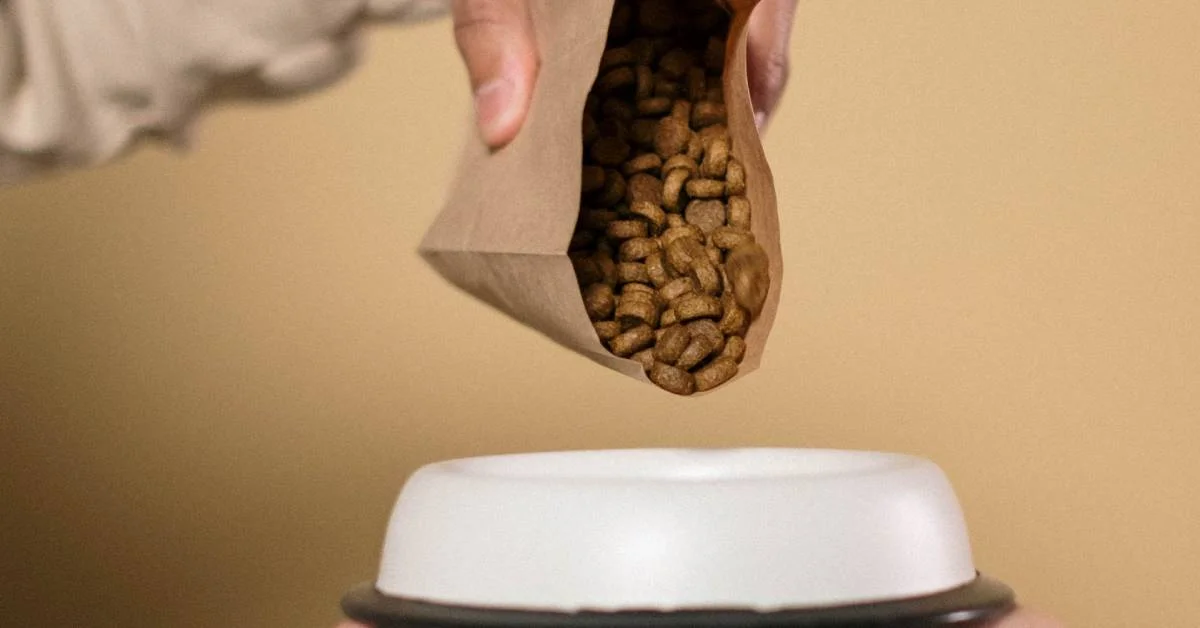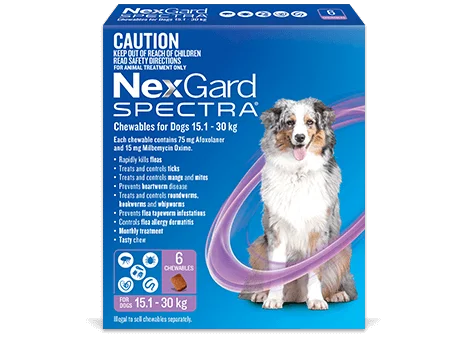Choosing the right dog food is crucial for your pet’s health and well-being.
This guide provides a thorough examination of the best dog food brands available in Australia, helping you make an informed decision for your furry friend.
Introduction
Understanding the importance of selecting the best dog food is essential for any pet owner. The right nutrition supports your dog’s health, energy, and overall quality of life.
This guide will explore the top brands and provide detailed insights to help you choose the best options for your dog.
Why Choosing the Right Dog Food Matters
The quality of your dog’s diet directly affects their health, energy levels, and longevity. Good nutrition supports strong bones, healthy skin, shiny coats, and overall vitality.
Poor-quality food can lead to health issues such as obesity, digestive problems, and weakened immune systems. Selecting the best dog food ensures your pet receives the nutrients they need to thrive.
Understanding Dog Nutrition Basics
Dog nutrition involves a balance of proteins, fats, carbohydrates, vitamins, and minerals.
Proteins support muscle growth and repair, fats provide energy, and carbohydrates offer a source of fibre for digestive health. Vitamins and minerals are crucial for various bodily functions.
Understanding these basics helps in choosing the right food that meets your dog’s specific needs.
Top Dog Food Brands in Australia
Australia offers a variety of high-quality dog food brands, each with unique benefits. This section highlights the top options available, focusing on their features, pros, cons, and pricing.
Orijen: The Benchmark of Dry Dog Food
Orijen is renowned for its high protein content and use of fresh, regional ingredients. It is considered one of the best dry dog foods globally, offering biologically appropriate nutrition for dogs.
Key Features
Orijen uses a high percentage of animal ingredients, including free-run poultry, wild-caught fish, and cage-free eggs. It is grain-free and rich in protein and fats, mimicking the natural diet of dogs.
Pros and Cons
Pros include high-quality ingredients, no artificial additives, and suitability for all life stages. Cons are its high cost and occasional stock shortages in Australia.
Availability and Pricing
Orijen is available in specialty pet stores and online. It is priced at the higher end of the market, reflecting its premium quality.
Petzyo: Best Australian-Made Dog Food
Petzyo is a popular choice among Australian pet owners for its high-quality, locally sourced ingredients and direct-to-consumer model, which helps keep prices reasonable.
Key Features
Petzyo uses human-grade ingredients, including free-range meat and organic vegetables. It offers both dry kibble and raw food options.
Pros and Cons
Pros include high-quality, locally sourced ingredients, and affordability due to the direct-to-consumer model. Cons include limited availability in physical stores.
Ordering and Discounts
Petzyo can be ordered online with discounts available for first-time customers and subscriptions. This makes it an accessible option for many pet owners in Australia.
Taste of the Wild: Best All-Rounder
Taste of the Wild is a globally recognized brand known for its grain-free formulas that cater to a variety of dietary needs and preferences.
Key Features
Taste of the Wild offers a range of grain-free and grain-inclusive formulas, using high-quality meats like bison, venison, and salmon. It is enriched with probiotics for digestive health.
Pros and Cons
Pros include a wide variety of flavours, high-quality ingredients, and good value for money. Cons are that it is imported, which can affect availability and pricing.
Suitability for Different Dogs
Taste of the Wild is suitable for dogs of all life stages and breeds, particularly those with grain sensitivities or specific dietary needs.
Hypro Premium: Best Budget-Friendly Option
Hypro Premium offers high-quality nutrition at an affordable price, making it a great option for budget-conscious pet owners.
Key Features
Hypro Premium uses natural ingredients, including Australian meats and vegetables, and avoids artificial additives. It offers a balanced diet for dogs.
Pros and Cons
Pros include affordability, natural ingredients, and a good nutritional profile. Cons include less variety in flavours compared to premium brands.
Affordability and Quality
Hypro Premium is widely available in pet stores and online. Its competitive pricing makes it accessible to a broad range of pet owners without compromising on quality.
Frontier Pets: Leading Freeze-Dried Raw Dog Food
Frontier Pets is known for its high-quality, ethically sourced freeze-dried raw dog food, offering convenience and nutrition in one package.
Key Features
Frontier Pets uses free-range meats and organic vegetables. The freeze-drying process preserves nutrients while offering the convenience of dry food.
Pros and Cons
Pros include ethically sourced ingredients, high nutritional value, and convenience. Cons are the higher price point and limited availability in physical stores.
Health Benefits
Frontier Pets provides a nutrient-dense diet that supports overall health, including strong bones, healthy skin, and a shiny coat. It is also suitable for dogs with specific dietary needs.
Specialized Dog Foods for Specific Needs
Different dogs have different nutritional requirements based on their age, breed, and health. This section covers the best options for puppies, senior dogs, active dogs, and those with sensitivities.
Best for Puppies: Nutritional Needs and Top Brands
Puppies require high levels of protein and fat to support their rapid growth and development. Brands like Royal Canin Puppy and Hill’s Science Diet Puppy offer specialized formulas for young dogs.
Best for Senior Dogs: Maintaining Health and Vitality
Senior dogs need a diet that supports joint health and a balanced metabolism. Brands like Nutro Senior and Eukanuba Senior provide tailored nutrition for older dogs.
Best for Active Dogs: High-Protein Options
Active dogs require higher protein and fat to maintain their energy levels. Brands like Purina Pro Plan Sport and Advance Active provide the necessary nutrients for high-energy dogs.
Best Hypoallergenic Dog Foods: For Sensitive Stomachs
Dogs with food sensitivities benefit from hypoallergenic diets. Brands like Royal Canin Hypoallergenic and Hill’s Prescription Diet offer solutions for dogs with digestive issues.
Grain-Free Dog Foods: Benefits and Top Picks
Grain-free diets can benefit dogs with grain allergies or sensitivities. Top brands include Blue Buffalo Wilderness and Merrick Grain-Free, which offer high-quality, grain-free options.
Balancing Wet and Dry Dog Foods
Both wet and dry dog foods have their benefits. This section discusses how to balance the two to provide a well-rounded diet for your dog.
Benefits of Wet Dog Food
Wet dog food offers hydration, higher protein content, and is often more palatable for dogs. Brands like Ziwi Peak and Hill’s Science Diet Wet provide high-quality options.
Top Wet Dog Food Brands
Top brands include Ziwi Peak, Hill’s Science Diet, and Blue Buffalo, known for their high-quality wet food formulations that meet various dietary needs.
Benefits of Dry Dog Food
Dry dog food is convenient, cost-effective, and good for dental health. Brands like Royal Canin and Orijen provide balanced, high-quality dry food options.
Top Dry Dog Food Brands
Top brands include Royal Canin, Orijen, and Taste of the Wild, known for their nutritious and well-balanced dry food formulations.
Combining Wet and Dry Food: Best Practices
Combining wet and dry food can offer the benefits of both. Mixing the two can enhance palatability, provide hydration, and ensure a balanced diet.
It is recommended to consult with a vet for the best combination for your dog.
Raw and BARF Diets
Raw and BARF (Biologically Appropriate Raw Food) diets offer a natural feeding approach. This section covers the benefits and top choices for raw feeding.
What is a BARF Diet?
A BARF diet consists of raw meat, bones, and vegetables, aiming to mimic the natural diet of dogs. It provides a high level of nutrients and supports overall health.
Best BARF Dog Foods in Australia
Australia offers several high-quality BARF options. This section highlights the best choices available.
Big Dog BARF
Big Dog BARF is a well-established brand offering human-grade ingredients.
It provides a variety of raw food options, including beef, chicken, and kangaroo, ensuring a balanced diet rich in protein and essential nutrients.
Proudi BARF
Proudi BARF uses human-grade ingredients and offers a slightly different approach by including a small amount of vegetables in their formulations.
Their products are highly rated for their quality and nutritional value.
Choosing the Right Dog Food for Your Pet
Selecting the right food involves understanding your dog’s unique needs and the nutritional value of different dog foods. This section provides guidance on making the best choice.
Reading Dog Food Labels: What to Look For
Understanding dog food labels is crucial. Look for high-quality protein sources, an absence of fillers and artificial additives, and a balanced mix of nutrients.
Ingredients are listed by weight, so the first few items on the list are the most significant.
Common Ingredients and Their Benefits
Key ingredients to look for include:
- Meat: Provides essential amino acids for muscle maintenance and energy.
- Vegetables: Source of vitamins, minerals, and fibre.
- Fats: Necessary for energy and healthy skin and coat.
- Vitamins and minerals: Support various bodily functions and overall health.
Understanding Dog Food Certifications and Standards
Ensure the dog food complies with the Australian Standard for the Manufacturing and Marketing of Pet Food (AS 5812-2017).
This standard ensures that the food meets specific nutritional, safety, and marketing criteria.
Where to Buy Dog Food in Australia
Purchasing dog food in Australia can be done through various channels. This section explores the best options available.
Online Retailers
Online retailers like Pet Circle, My Pet Warehouse, and Petzyo offer a wide variety of dog foods with the convenience of home delivery. They often provide discounts and subscription services to save on costs.
Local Pet Stores
Local pet stores, such as Petbarn and Petstock, provide a hands-on shopping experience where you can consult with staff and choose from a range of products.
They also offer loyalty programs and in-store promotions.
Direct from Manufacturers
Buying directly from manufacturers, such as Petzyo and Frontier Pets, can sometimes offer better pricing and fresher products. These brands often provide subscription services for regular deliveries.
Conclusion
Choosing the best dog food for your pet involves understanding their specific needs and the nutritional benefits of different brands.
By considering the information provided in this guide, you can make an informed decision that supports your dog’s health and happiness.
Making the Best Choice for Your Dog
Evaluate your dog’s health, activity level, and dietary needs when selecting a dog food. Consult with your veterinarian to ensure the chosen food meets all their nutritional requirements.
Taking the Next Steps: Where to Start
Start by researching and comparing the top brands mentioned in this guide. Visit online retailers, local pet stores, or contact manufacturers directly to find the best deals and options.
Your dog’s health and well-being are worth the effort to find the best food available.











